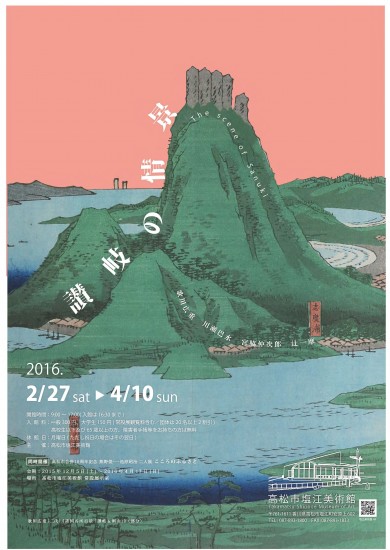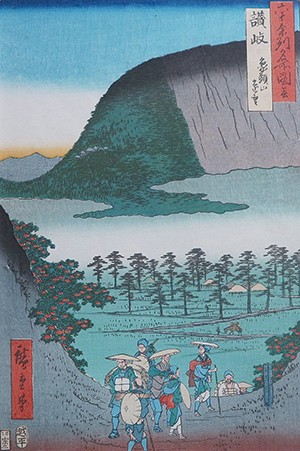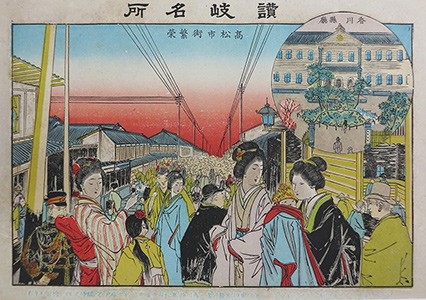
[period] From Saturday, February 27, 2016 to Sunday, April 10
[time] From 9:00 a.m. to 5:00 p.m. (as for the entering a building until half past 4 p.m.)
[entering a building charges] general 300 yen, university student 150 yen (in permanent exhibition view charges / group to include
20% off more than 20 people)
Monday (the next day but in the case of a holiday) free in the owners such as less than high school student, the one, certificate of the physically disabled 65 years or older [closed day]
[sponsorship] Shioe, Takamatsu-shi art museum
(exhibition writer) Hiroshige Utagawa, Hasui Kawase, 辻一摩, Tadashi Miyawaki Jiro
To date, why has the work about the noted place been created a lot?
The famous place was composed the song pillow of the 31-syllable Japanese poem which old くには was good for saying “it is about time when it” on and was the word that pointed to the ground where the name in particular stood, the famous place. A famous place, a historic site coming up in literature, a historical fact, a myth, a legend are “などころ”. However, when it is the Edo era, and a trip becomes popular, the famous place comes to be actually used as words to point to the place that can be visited, and “a famous place” (めいしょ) is born in each place. A trip is safe, and there comes to be it usefully by a highway and the accommodations, a vehicle being maintained in the Edo era by daimyo’s alternate-year residence in Tokyo, and having advanced to the distribution of the money and has a trip boom from (Kyoho) in about 1716 to general public. In addition, “an actor” was the center, but, as for the representative theme of the early ukiyoe print, it may be said that it is one of the factors that scenery came to be taken up under the influence of Western art with “a harlot”.
It is old, and a domestic noted place is taken up as a motif in this way from the Edo era and is described. In late years a sightseeing souvenir is past and describes a lost historic inheritance, and, the role of the guidebook of the tourist attraction, it also changes into 残 すためなど, the reason again by the fashion and the event in the times, a social background once once.
I introduce approximately 35 points of works which takes it up by the book exhibition about a noted place of Sanuki (Kagawa) from the Edo era through the Showa era, and describes it in the technique of the print, and was woken up. You put the times settings projected there together, and please enjoy it. Do you not go round the noted places of Sanuki through a work by all means at this opportunity?

It is 1853 Hiroshige Utagawa (the first generation) <

Miyawaki relation Jiro <
Shioe, Takamatsu-shi art museum homepage:
https://www.city.takamatsu.kagawa.jp/5041. html
